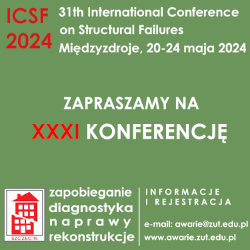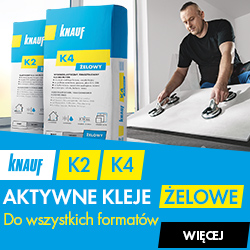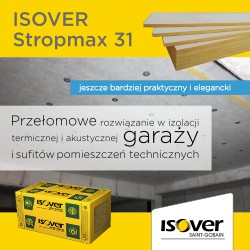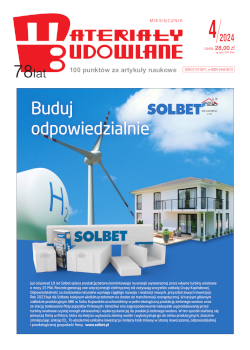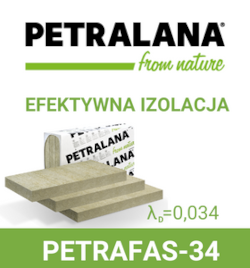Open Access (Artykuł w pliku PDF)
Influence of corundum sand on the properties of cement concrete
prof. dr hab. inż. Elżbieta Horszczaruk, Zachodniopomorski Uniwersytet Technologiczny w Szczecinie, Wydział Budownictwa i Inżynierii Środowiska
ORCID: 0000-0003-0840-5048
prof. dr hab. inż. Włodzimierz Kiernożycki, Zachodniopomorski Uniwersytet Technologiczny w Szczecinie, Wydział Budownictwa i Inżynierii Środowiska
ORCID: 0000-0002-7577-6319
Adres do korespondencji: Ten adres pocztowy jest chroniony przed spamowaniem. Aby go zobaczyć, konieczne jest włączenie w przeglądarce obsługi JavaScript.
DOI: 10.15199/33.2023.09.03
Oryginalny artykuł naukowy
Streszczenie. W artykule przedstawiono wyniki badań wpływu odpadowego piasku korundowego używanego do piaskowania konstrukcji metalowych na właściwości betonu. Piasek korundowy zastosowano jako zamiennik 25, 50 i 75% objętości kruszywa drobnego. Przeprowadzone zostały badania konsystencji mieszanek betonowych i gęstości objętościowej betonów. Badano wytrzymałość na ściskanie i rozciąganie przy rozłupywaniu betonów po 7 i 28 dniach dojrzewania. Określono również nasiąkliwość betonów i głębokość penetracji wody pod ciśnieniem. Badania potwierdziły możliwość zastosowania piasku korundowego jako zamiennika kruszywa drobnego w betonach cementowych.
Słowa kluczowe: beton cementowy; piasek korundowy; zamiennik kruszywa drobnego; tlenek glinu; właściwości mechaniczne.
Abstract. The paper presents the results of research on the influence of waste corundum sand used for sandblasting metal structures on the properties concrete. Corundum sand was used as a substitute for sand in the amount of 25%, 50 and 75% of the fine aggregate volume.Testswere carried out on the consistency of concretemixes and the bulk density of concretes. The compressive strength and tensile splitting strength were measured at the age of the concrete of 7 and 28 days. The water absorption of concretes and the depth of water penetration under pressure were also determined. The tests confirmed the possibility of using corundum sand as a substitute for fine aggregate in cement concrete.
Keywords: cement concrete; corundum sand; substitute for fine aggregate; aluminum oxide; mechanical properties.
Literatura
[1] Singh N, Bhardwaj A. Reviewing the role of coal bottom ash as an alternative of cement. Construct Build Mater. 2020; 233: 117276.
[2] Sun J, Shen X, Tan G, Tanner JE. Compressive strength and hydration characteristics of high-volume fly ash concrete prepared from fly ash. J Therm Anal Calorim. 2019; 136 (2): 565e80.
[3] Ganesh P, MurthyAR. Tensile behaviour and durability aspects of sustainable ultra-high performance concrete incorporated with GGBS as cementitious material. Construct Build Mater. 2019; 197: 667e80.
[4] Qureshi LA, Ali B, Ali A. Combined effects of supplementary cementitious materials (silica fume, GGBS, fly ash and rice husk ash) and steel fiber on the hardened properties of recycled aggregate concrete. Construct Build Mater. 2020; 263: 120636.
[5] Etxeberria M, Vázquez E, Marí A, Barra M. Infuence of amount of recycled coarse aggregates and production process on properties of recycled aggregate concrete. CemConcr Res. 2007; 37: 735 – 742.
[6] Chung SY,Abd ElrahmanM, Sikora P, Rucińska T, Horszczaruk E, Stephan D. Evaluation of the Effects of Crushed and ExpandedWaste Glass Aggregates on the Material Properties of Lightweight Concrete Using Image-Based Approaches. Materials. 2017; DOI: 10.3390/ma- 10121354.
[7] Ołdakowska E. Ocena wybranych właściwości betonów zwykłych z rozdrobnioną gumą ze zużytych opon samochodowych. Ecological Engineering. 2015; DOI: 10.12912/23920629/58902.
[8] Akcaozoglu S, Atis CD, Akcaozoglu K. An investigation on the use of shredded waste PET bottles as aggregate in lightweight concrete.WasteManage. 2010; DOI: 10.1016/j.wasman.2009.09.033.
[9] Medina NF, Medina DF, Hernandez-Olivares F, NavacerradaMA.Mechanical and thermal properties of concrete incorporating rubber and fibres from thyre recycling. Constr Build Mater. 2017; DOI: 10.1016/j.conbuildmat.2017.03.196.
[10] Zain MFM, Islam MN, Radin SS, Yap SG. Cement-based solidification for the safe disposal of blasted copper slag, Cem. Concr. Compos. 2004; 26: 845 – 851
[11] Aurich JC, Linke B,HauschildM, CarrellaM, Kirsch B. Sustainability of abrasive processes, CIRPAnn. Manuf. Technol. 2013; 62: 653 – 672.
[12] Borucka-Lipska J, Techman M, Skibicki S. Use of contaminated sand blasting grit for production of cement mortars. IOP Conf. Ser.Mater. Sci. Eng. 2019; https://doi.org/10.1088/1757- 899X/471/3/032055art.no.032055.
[13] Sua-iam G, Makul N. Rheological and mechanical properties of cement-fly ash self-consolidating concrete incorporating high volumes of alumina-based material as fine aggregate. Constr. Build. Mater. 2015; 95: 736 – 747.
[14] Pranav S, Lahoti M, Shan X, En-Hua Yang E-H, Muthukumar G. Economic input-output LCA of precast corundum-blended ECC overlay pavement. Resources, Conservation, and Recycling. 2022; 184: 106385.
[15] Sua-iam G, Makul N. Use of recycled alumina as fine aggregate replacement in self-compacting concrete. Constr. Build.Mater. 2013; 47: 701 – 710.
[16] Dal Poggetto G, Kittisayarm P, Pintasiri S, Chiyasak P, Leonelli C. Chaysuwan, D. Chemical andMechanical Properties ofMetakaolin-Based Geopolymers withWaste Corundum Powder Resulting from Erosion Testing. Polymers. 2022; 14: 5091.
[17] Dal Poggetto G, D’Angelo A, Catauro M, Barbieri L, Leonelli C. Recycling of Waste CorundumAbrasive Powder inMk-Based Geopolymers. Polymers. 2022, 14, 2173.
Przyjęto do druku: 17.08.2023 r.
Materiały Budowlane 09/2023, strona 9-12 (spis treści >>)










